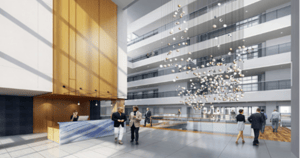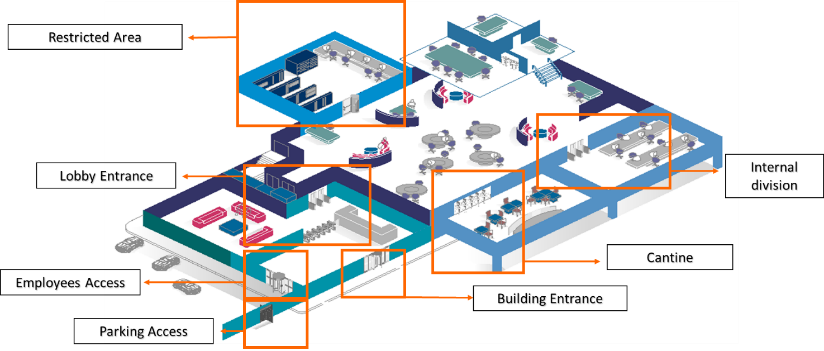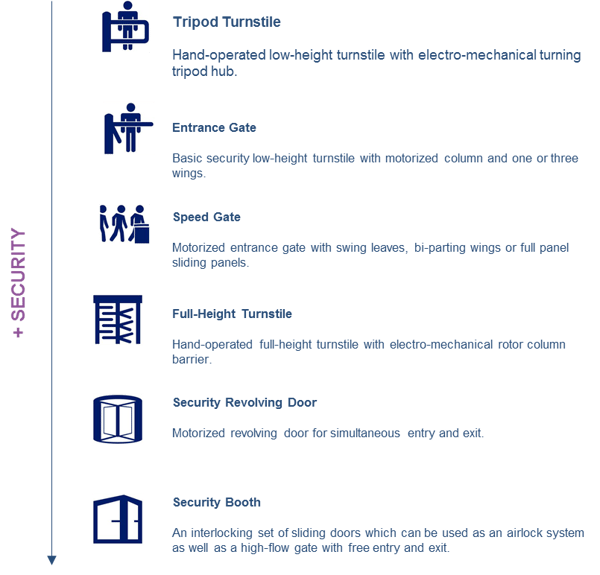Office lobbies and reception areas in commercial buildings have evolved dramatically during recent years. But one thing remains the same – you want your property to be secure.
Security Systems for Commercial Buildings: Security Starts at the Entrance
You must be certain you have the right people inside, and that they are where they are supposed to be. In an emergency, you want to be sure they can get out as quickly as possible and that nobody is left behind.
The challenges to making this happen have never been greater.
Reception areas are getting larger and more open, to impress visitors and make employees feel welcome. Owners want the latest design trends and to keep barriers to a minimum.
There can be public areas in the lobby, maybe a coffee bar and a lounge open to everyone. Many things can happen here during office hours, but also outside them.
Work is becoming more flexible, people come and go throughout the day and night. Security turnstiles may need to be connected remotely, so security can be maintained even if no staff member is physically present.
And the lobby is unlikely to be the only way in or out of your building – the same levels of security and sophistication are necessary in car parks and side entrances, where nobody is watching.

Security can be both “active” and “passive”. Passive security is related to how a gate is positioned and structured to unconsciously create an aura of security and control.
Active security includes detecting attempts at fraudulent passage and then blocking them safely and firmly. Location of sensors at the building’s entrance is therefore critical, as is the software that governs how the gates perform.

Read more about Gunnebo:
- Access Control Solutions webpage
- Introduction to Entrance Security for Offices
- Comparison Guide: Access Control Systems for Office Buildings
This is the first in a series of three blog posts on entrance security for office buildings. Coming up:

